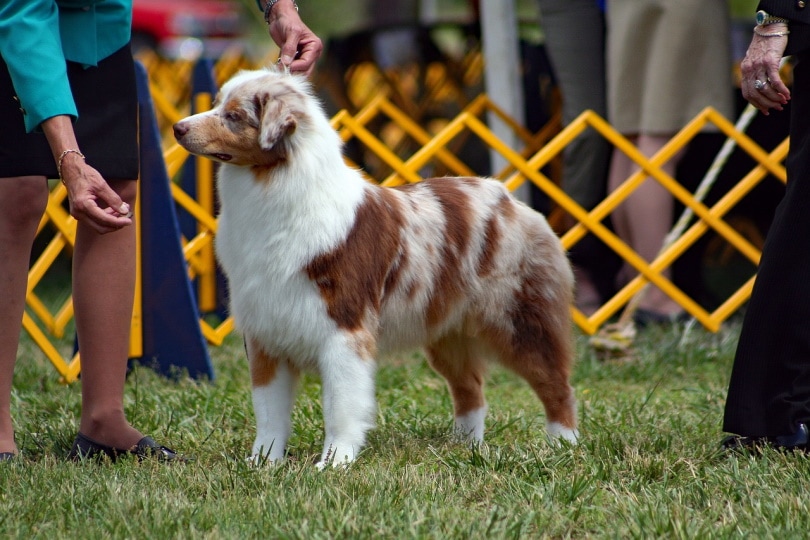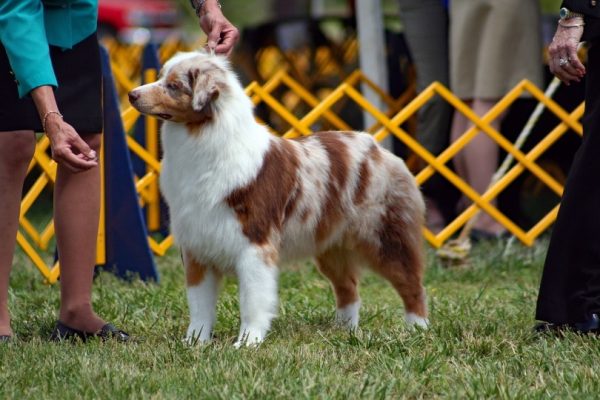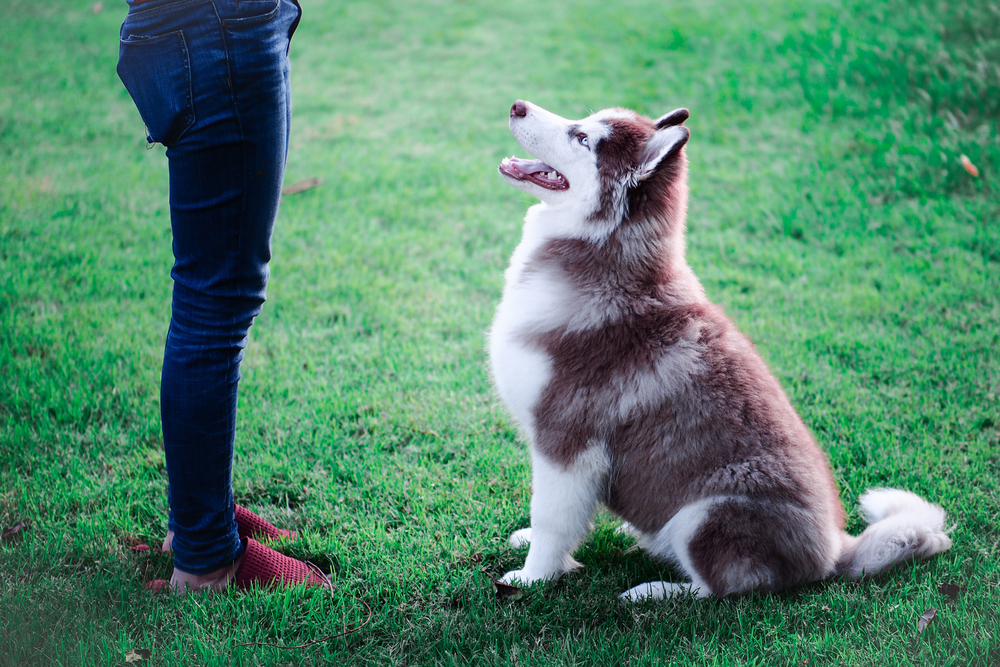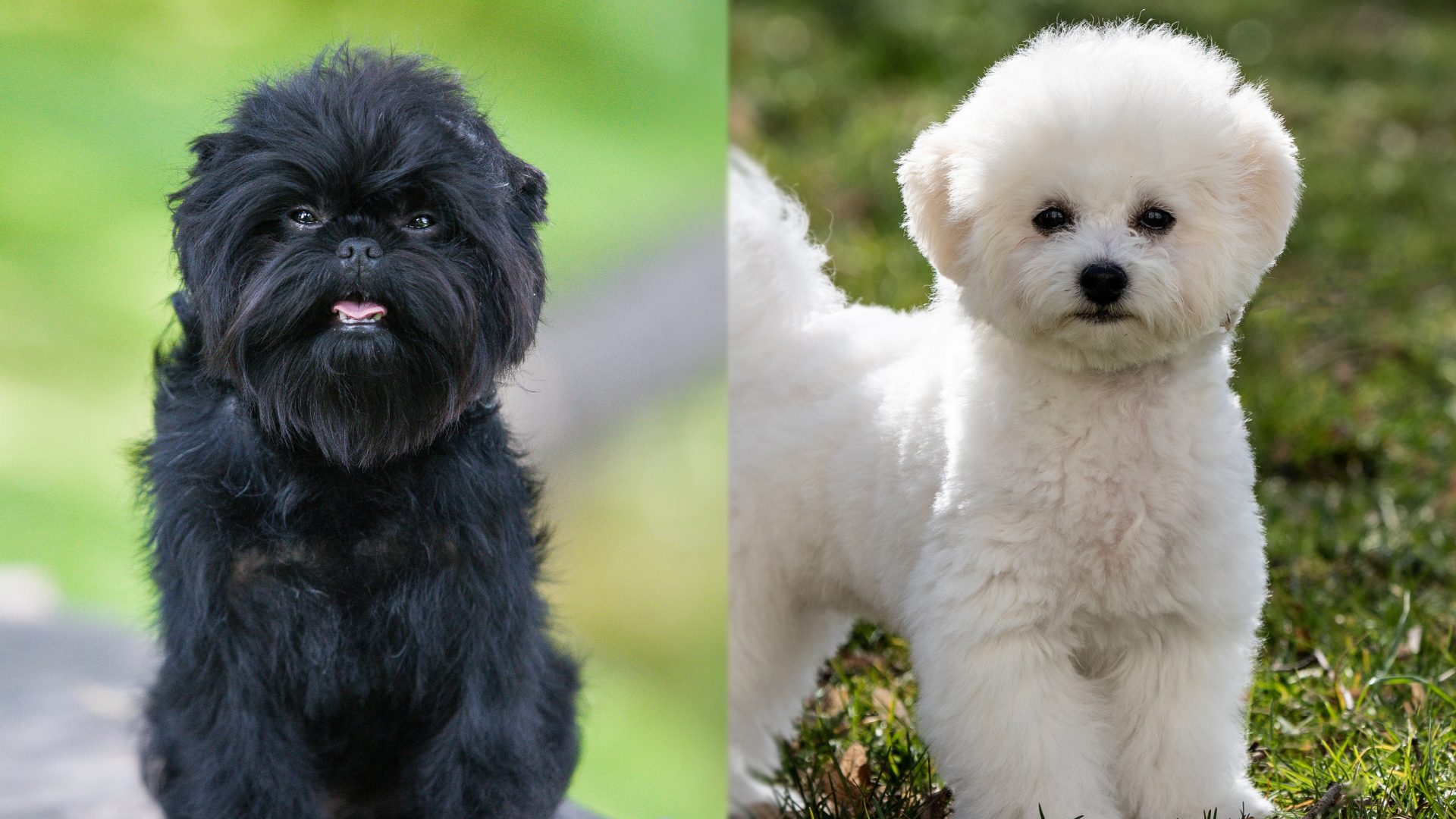Click to Skip Ahead
Do you have a pup that you feel would excel competing in a dog show but have no idea what that entails or how to get started? If this is you, we’re here to help guide you through the basic process.
We discuss the different types of dog shows, how to train a dog for a show, how to get into one, the classes that you’ll need to take, and other valuable information regarding conformation1 and dog showing for beginners.1 Let’s begin!
What Is Conformation, Anyway?
Conformation is the official term for dog shows, which is the act of conforming. Dogs entered into dog shows are measured by how they conform to their breed’s standards. For example, the American Kennel Club (AKC) describes the breed standards for any purebred dog, such as acceptable colors, markings, anatomy, etc. The purpose is to establish a guideline describing a breed’s ideal characteristics, appearance, and temperament and to evaluate breeding stock.
Dogs entered into shows are not compared to the other dogs in the show; they are measured by how well they conform to their own breed’s standards. Why is this necessary? It’s to ensure that future offspring will meet the breed’s standards. This is why you’ll never see mixed or hybrid dogs registered under the AKC, nor will you see them in dog shows.
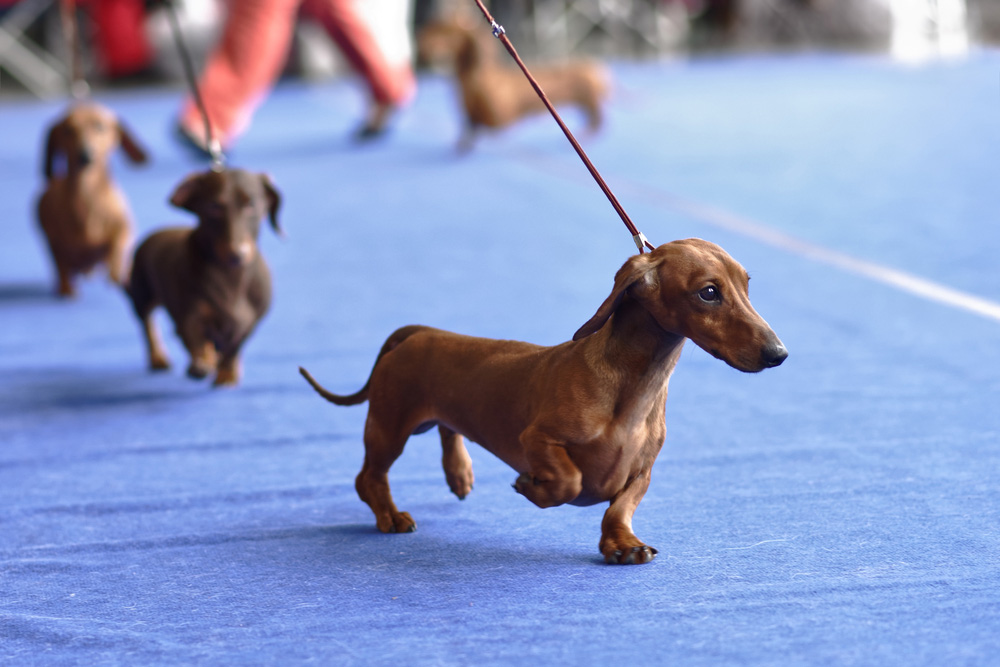
What Are the Different Types of Dog Shows?
There are three different types of dog shows. They are as follows.
1. All-Breed Shows
All-breed shows are the ones that many people are familiar with and that are shown on television. These provide competition for more than 175 breeds and various dogs recognized by the AKC.
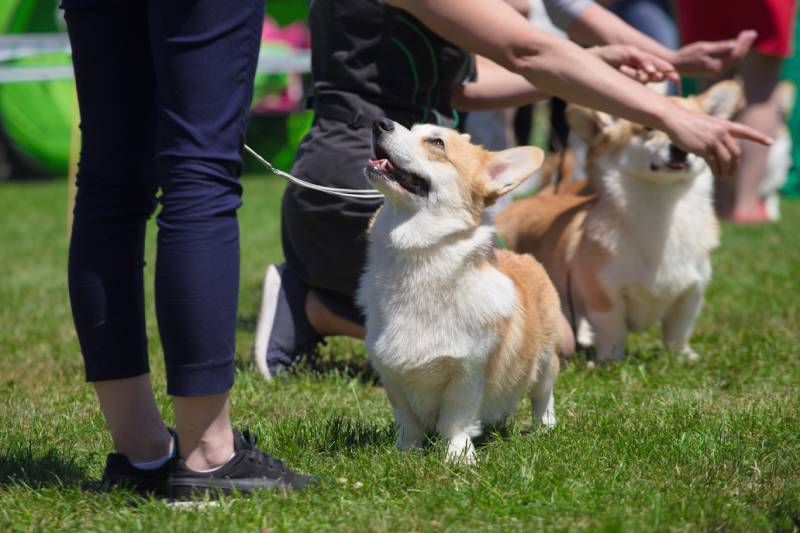
2. Specialty Shows
Specialty shows only allow specific breeds or varieties of specific breeds. For example, the Boston Terrier Club of America is for Boston Terriers only, and the Poodle Club of America allows different varieties of the Poodle: mini, toy, and standard.
3. Group Shows
- Hound Group: Breeds bred to hunt by sight or scent (Greyhound, Beagle, Basset Hound, Dachshund)
- Herding Group: Breeds bred to herd livestock (Collie, Old English Sheepdog)
- Toy Group: Breeds developed for household companionship (Pug, Chihuahua, Pomeranian, Maltese)
- Non-sporting Group: Diverse group varying in size and function, with many considered champion dogs (Dalmatian, Chow Chow, Bulldog, Poodle)
- Sporting Group: Breeds bred to hunt game birds on land and in water (Pointers, Setters, Retrievers, Spaniels)
- Terrier Group: Breeds bred to hunt vermin, such as rats and mice (Cairn Terrier, Scottish Terrier, Airedale)
- Working Group: Breeds bred for pulling carts, performing search and rescue missions, and guarding property (Doberman Pinscher, Saint Bernard, Boxer, Akita)
What Is Best in Show?
Best in Show is selected from the dogs that have won in their particular group, which is one of the mentioned seven groups designated by the AKC. Best in Show is the highest award that your dog can achieve in a dog show, and dogs can compete for the coveted award by the process of elimination in all-breed shows and limited-breed shows.
While Best in Show is the highest award, other titles are also involved, such as Grand Champion, Select Dog, Select Bitch, and others, along with a new series called the AKC Owner-Handled Series. This is a non-titled competition for dogs shown by handlers who are not professionals. In other words, this new event allows non-professional owners to handle and show their dogs in shows to compete against other non-professional handlers/owners. In this event, one has the opportunity to win at Breed, Group, and Best in Show levels.

How Does a Dog Show Work?
Each dog is handled (or exhibited) by a professional handler to a judge. Most dogs are competing for points toward their AKC championships. To become an American Kennel Club “Champion of Record,” a dog must gain 15 points, which must include two major wins awarded by three different judges. The maximum number of points awarded to a dog in any show is five points. The number of points awarded in a show depends on how many males and females of a particular breed there are in a show; the larger the entry, the greater the number of points each sex can win.
Dog Classes
- Puppy
- 12–15 Months
- Novice
- Amateur-Owner-Handler
- Bred by Exhibitor
- American-Bred
- Open
Essentially, dog shows operate by the process of elimination, with judges selecting a first-place winner in each class. Think of it as climbing down a ladder: The more first prizes in each class, the further the dog moves in the show under the different titles, with the chance of competing in Best in Show.
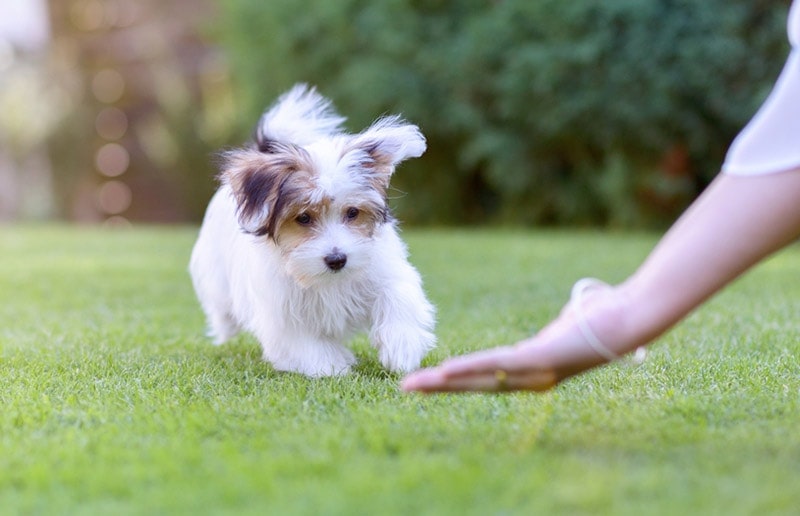
How to Train a Dog for a Dog Show
While watching a dog show, the process may seem easy; all the dogs have to do is stand still, let the judges touch them all over and look into their mouths, and prance around the ring. It seems simple enough, right? Most people don’t realize that quite a bit of training is involved in getting the dog to be still and walk/trot appropriately in the ring. Let’s examine the steps for success.
1. Touching
The first step is to get your dog acclimated to being touched all over. Males will have their testicles handled by the judges to ensure that they have descended, so getting your dog used to this seemingly uncomfortable act will go a long way.
Your dog’s mouth will be examined, so getting your dog used to having the lips raised and mouth opened is something that you don’t want to skip during training. You should have other people touch your dog to get them used to different hands, especially in places away from home or the vet’s office, such as at dog parks or other local places. Remember that different judges will be touching your dog all over.
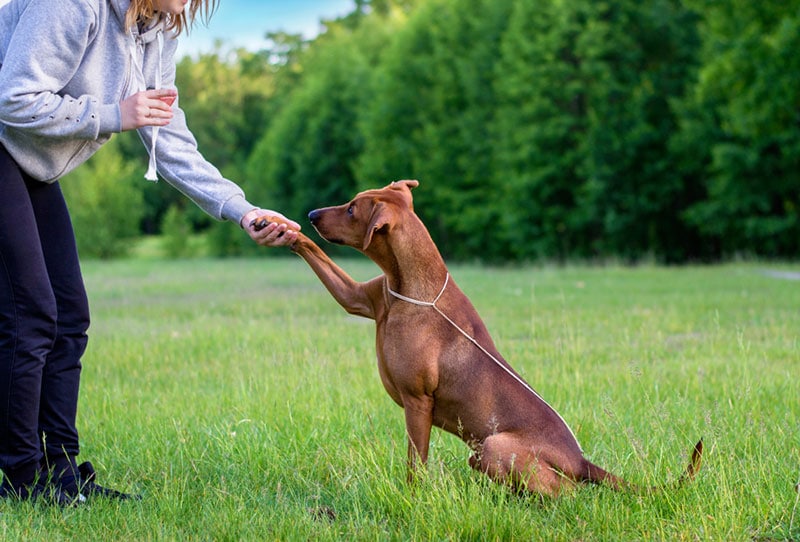
2. Stacking and Baiting
Stacking and baiting are important terms to know before even considering entering a dog show. You may notice the handler giving treats to the dog as the judge touches and examines them, which is called baiting. Most dogs expect a reward for doing something right, and a dog in a dog show is no exception.
Stacking is the term used for the pose that a dog holds on their own without the help of the handler while a judge examines, touches, and observes. The dog must stand squarely and still on a table and the ground. Training classes will teach the methods of teaching your dog how to stack.
3. Lead Training and Gaiting
The dog must be trained to walk with an appropriate gait on a lead, which will be on the dog’s neck, rather than a harness. Training classes will show you tips and tricks on how to get your dog to learn multiple gaiting patterns and show ring procedures.
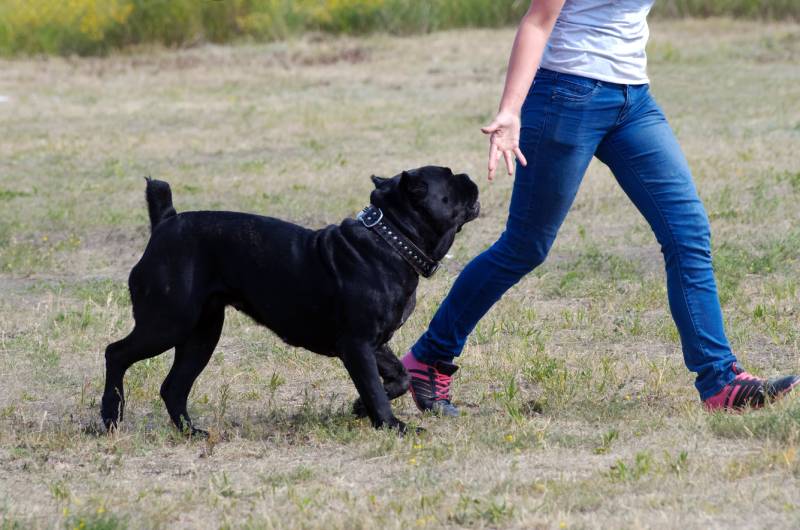
4. Grooming
Depending on the coat, some dogs do not require as much grooming as others. Some dogs can do fine with a quick brush, but others may need a more involved grooming session before entering the ring, such as dogs with longhaired coats. The breeder from which you acquired your dog or a mentor can give you advice on grooming tips.
Keep in mind that the teeth should be in tip-top shape and the nails should be trimmed, so getting your dog acclimated to having the teeth brushed and nails trimmed is a necessary factor in keeping them looking acceptable for a dog show.
How to Get Started in Dog Shows
You’ve completed all the training, and you feel your purebred dog would do well in a dog show, but how in the world do you get your precious pup in one?
For starters, your dog must be registered with the AKC under the respective breed. They must also be 6 months of age or older, be a breed recognized under a class offered in a show, and meet the eligibility requirements laid out by the breed standard. Note that spayed or neutered dogs are not allowed to enter because the purpose of the shows is to evaluate breeding stock.
After you’ve completed the steps, the first recommended form of action is to join a local club specific to your dog’s breed for tips and information on training classes. You can check out the AKC’s website and search local clubs by state.
Another recommended step is to get involved in the AKC New Exhibitor Mentor Program, which connects experienced handlers or breeders with newcomers to AKC sporting events. If you don’t want to handle your dog yourself, you can hire a professional handler for a fee.
It can be overwhelming at first when you’re a newcomer, but joining the mentor program can be beneficial and is an excellent resource to learn the ins and outs of the shows and rules.
Summary
For newcomers, dog shows can be a little intimidating at first, as you’ll see more experienced handlers around you, but everyone is a beginner at some point. Dog shows should be enjoyable, and if you decide to handle your dog yourself, you and your pup will gain a unique bonding experience during the training process.
If you are a newcomer and get eliminated early on, stick around and watch the rest of the show; in doing so, you’ll learn even more tips and tricks by watching experienced handlers work their magic.
Featured Image Credit: LRuss, Pixabay

